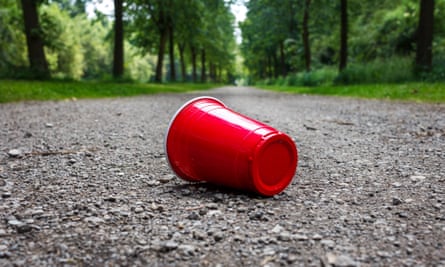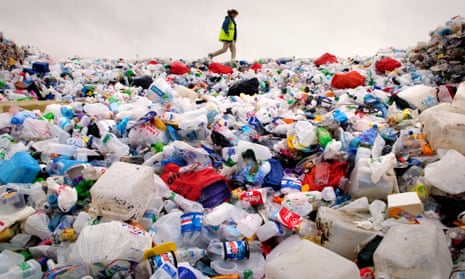I decided not to throw away any of my plastic waste for a year when, in 2016, while out on a run, I stumbled across vast amounts of plastic entangled in washed-up seaweed. Shortly after, a query to my local council regarding plastic recycling garnered the response: “I’m afraid it’s not available where you live.” But recycling is our way of doing good, right? Recycling is just a word, not a promise. It’s the tentative nod of approval that allows us to rationalise the everyday choices we make.
The chancellor’s newly announced plastic tax will charge manufacturers if their plastic packaging does not include at least 30% recycled content. For this to work, packaging producers will need to rely on extensive availability of quality recycled materials in the UK. But Philip Hammond’s allocation of only £20m to tackle plastics and boost recycling isn’t going to touch the sides.
For our report Everyday Plastic: what we throw away and where it goes, my co-author Dr Julie Schneider calculated that based on the number of pieces, only 4% of the plastic waste that I collected over the course of a year would end up being recycled at facilities in the UK (or 6% by weight) if put in the recycling. Our report also shows that of my collection of 4,490 discarded pieces of plastic, only 59 pieces (1.3%) are made from recycled materials.
Where are manufacturers going to acquire all these recycled materials from when plastic recycling is a system that barely exists in this country? One approach could be to significantly increase the required contributions from supermarkets and food and drinks companies towards collecting and recycling their own waste which, according to a report in the Guardian, could be announced in the government’s upcoming new waste strategy. At the moment, producers contribute only 10%. Through our taxes, we pay the rest.
In 2016 the government reported that, by weight, 46% of the UK’s plastic packaging waste was recycled. This figure – however the government chooses to justify it – is misleading, especially if compared to my own individual plastic packaging recycling rate of 6%. This reported recycling rate of 46% is in fact the amount of plastic packaging waste that is collected for recycling. What is most misleading, however, is that more than 60% of the plastic that you throw into your recycling bin is collected, then sent to another country and defined as recycling. Less than half is actually recycled.
When we think of recycling, we picture a plastic bottle being reprocessed and turned into a new plastic bottle, over and over again. In reality, there is unavoidable degradation during the plastic recycling process and it is hard to extract a pure plastic type that hasn’t been contaminated by other plastics, food residues, chemicals etc. Usually, only a small percentage of the plastic collected for recycling is of a quality that satisfies food-grade packaging standards. Only 1.3% of the plastic packaging I collected over a year was made of recycled materials, an honest illustration that a mere fraction of plastic is recycled into new packaging. The rest is downcycled, meaning it is used to create non-recyclable, low-value products such as toys or drainpipes. We need to design stuff that doesn’t have to be thrown away or downcycled. We need to keep plastic waste in the system and out of the natural environment, and move towards a circular economy.

We’re sleepwalking through supermarket aisles, shopping malls and online retailers, consuming without opening our eyes or acknowledging the product wrapped in plastic that we’re holding in our hands. And here lies the heart of the issue. The plastic problem is a byproduct of consumerism – a culture that perfectly blends the interests of the economy and society. When a culture takes root, it grows, and we have been subtly indoctrinated by a throwaway consumer culture that we have warmly embraced.
When I emptied my year-long collection of plastic waste from the 22 bin bags I’d accumulated, filling the floor of a massive warehouse with thousands of familiar products and brands, I was genuinely disgusted. This was all the stuff I’d bought, used and chucked away in 2017. Such is the nature of our fast-moving throwaway society, I barely remembered using any of it. My plastic waste over a year certainly says a lot about me, but it also says a lot about us. Each piece is the legacy of a decision made, a thirst quenched, a belly filled, a wardrobe brightened or an iPhone unpacked.
One year of throwing away 4,490 pieces of plastic waste made me stop and re-think. Recycling is not and never will be the sole solution. We need to massively improve and invest in recycling infrastructure, but also significantly reduce what we produce and use. Learning to connect with and reduce what we consume not only confronts the plastic problem, it can also improve our society and culture as a whole.
